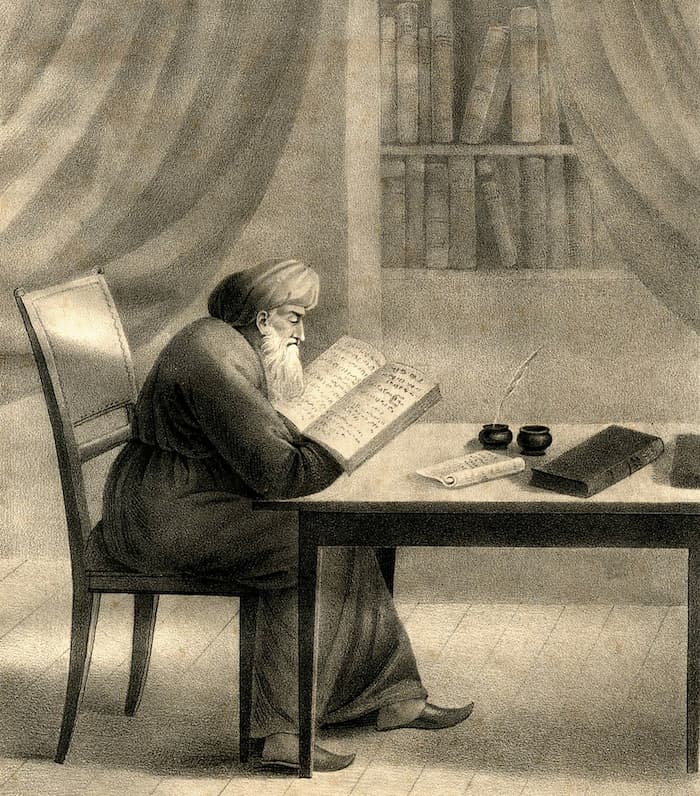Introduction
Isaac Alfasi, known reverently as the Rif, occupies an esteemed position among Sephardic scholars, heralded for his monumental contributions to Jewish jurisprudence. Born in 1013 in Algeria, within the expansive realm of the Caliphate of Córdoba, Alfasi’s journey as a scholar and jurist profoundly impacted the course of Jewish legal tradition.
| Points | Details |
|---|---|
| AKA | Rif (Rabbi Isaac Alfasi) |
| Born | 1013 |
| Place of Birth | Algeria, Caliphate of Córdoba |
| Died | 1103 |
| Place of Death | Lucena, Al-Andalus |
| Occupation(s) | Rabbi, Talmudic scholar |
| Notable Works | “Sefer HaHalachot” (Book of Laws) |
Early Life and Education
Isaac Alfasi’s early years were steeped in a rich tapestry of intellectual rigor and religious devotion. Raised in a family deeply committed to Jewish scholarship, he received a comprehensive education in Talmudic studies, rabbinic literature, and halachic interpretation. Under the guidance of renowned scholars of his time, Alfasi displayed exceptional acumen and a voracious appetite for learning.
Rise to Prominence
Alfasi’s meteoric rise to prominence in the world of Jewish jurisprudence was propelled by his unparalleled erudition and keen intellect. His reputation as a preeminent halachic authority earned him widespread recognition, leading to his appointment as the head of the rabbinic court in Fez, Morocco. Alfasi’s judicious rulings and astute legal analyses garnered him the admiration and respect of scholars and laypersons alike, solidifying his status as a luminary within the Sephardic community.
Notable Works
Central to Isaac Alfasi’s enduring legacy is his seminal work, “Sefer HaHalachot” (Book of Laws). This magnum opus represents a monumental achievement in Jewish legal literature, providing a systematic and comprehensive compilation of legal rulings derived from the Talmud. Alfasi’s meticulous organization and lucid exposition of complex legal concepts made the “Rif” an indispensable resource for generations of scholars and practitioners seeking clarity in halachic interpretation and application.
Influence and Legacy
The profound impact of Isaac Alfasi’s scholarship extends far beyond the confines of his era, leaving an indelible mark on the trajectory of Jewish legal thought. His meticulous analyses and authoritative rulings continue to serve as guiding principles for halachic decision-making within the Sephardic tradition. Moreover, Alfasi’s enduring legacy is perpetuated by the countless students and disciples who study his writings, ensuring that his contributions to Jewish jurisprudence remain relevant and influential in contemporary times.
Commemoration
In recognition of his monumental achievements and lasting influence, numerous yeshivot, synagogues, and academic institutions bear the name of Isaac Alfasi. These institutions serve as living testaments to his enduring legacy, providing a platform for the study and dissemination of his teachings to future generations of scholars and laypersons. Alfasi’s memory is honored and revered within the Sephardic community, serving as a source of inspiration and pride for all who cherish the rich heritage of Sephardic scholarship.
Conclusion: Isaac Alfasi
In conclusion, Isaac Alfasi’s life and contributions stand as a testament to the brilliance and resilience of Sephardic Jewish scholarship. His unwavering commitment to the pursuit of knowledge, coupled with his profound insights into Jewish law, continue to inspire and enlighten scholars and practitioners of Judaism worldwide. As we reflect on his legacy, we are reminded of the enduring vitality and intellectual richness of the Sephardic tradition, embodied by the towering figure of Isaac Alfasi, the Rif.
Resources
- “Jewish Virtual Library”: Offers comprehensive articles on Jewish history, including biographies of notable figures like Isaac Alfasi. Jewish Virtual Library
- “Encyclopedia Judaica”: Provides in-depth entries on Jewish history, culture, and figures, offering valuable insights into Isaac Alfasi’s life and contributions.
- “The Responsa Project”: A digital database containing thousands of rabbinic responsa, including those authored by Isaac Alfasi, offering firsthand insights into his legal rulings and interpretations.
- “Sephardic Horizons”: A scholarly journal focusing on Sephardic history, culture, and literature, featuring articles that may discuss Isaac Alfasi’s influence and legacy in depth.
- “Medieval Jewish Civilization: An Encyclopedia”: Edited by Norman Roth, this encyclopedia covers various aspects of medieval Jewish life, including prominent figures like Isaac Alfasi.
These sources offer valuable insights into Isaac Alfasi’s life, scholarship, and enduring impact on Jewish legal thought.








Ohr HaChaim Yomi – Emor